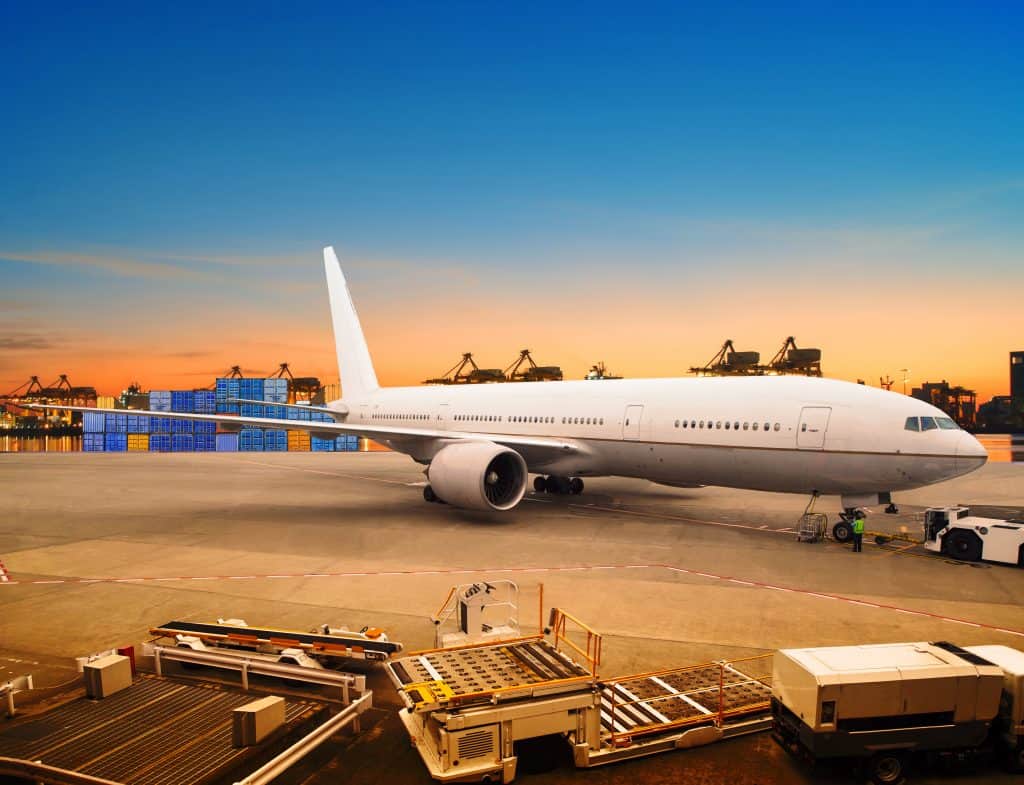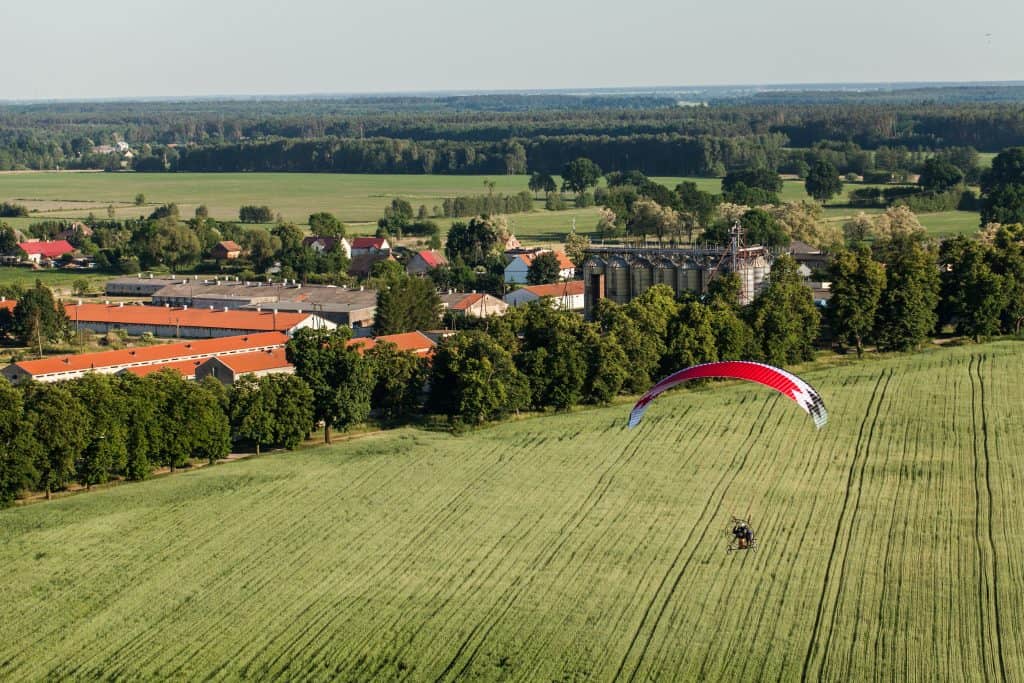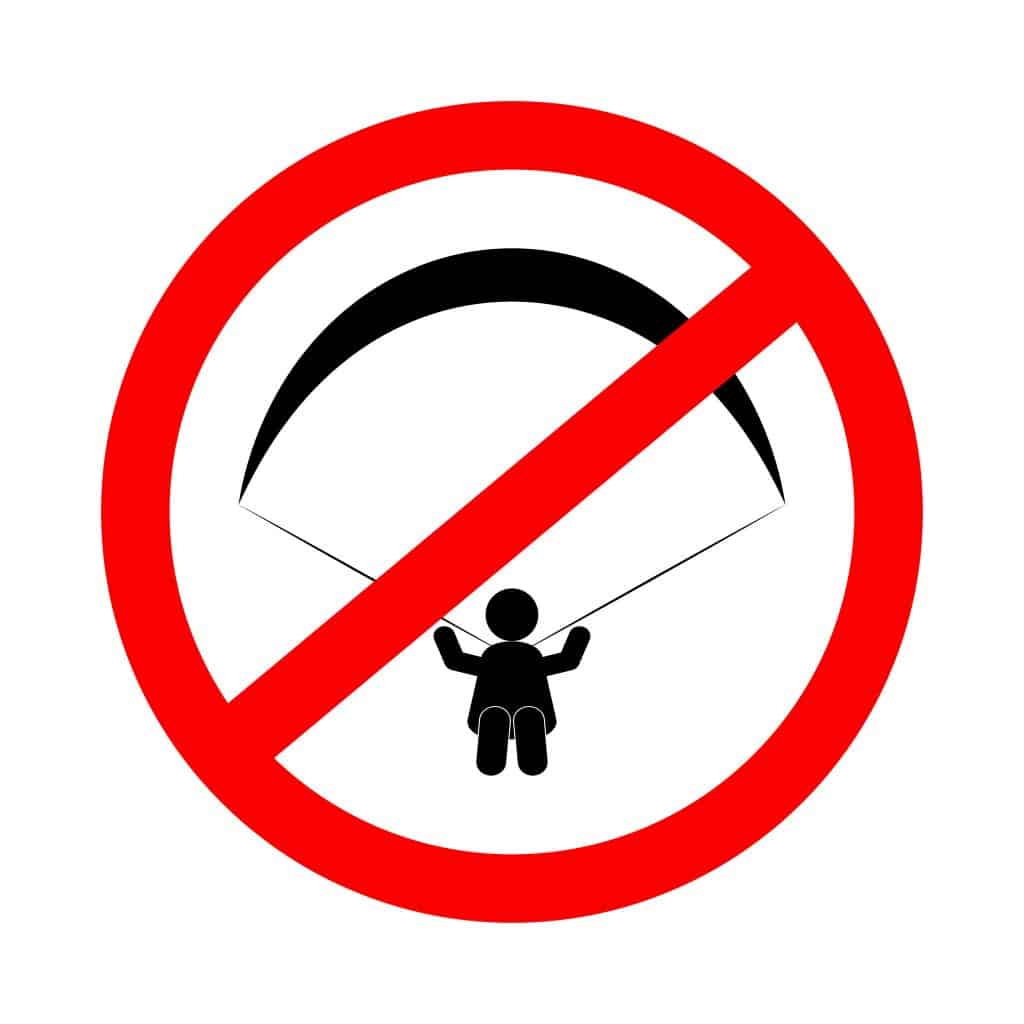So you’ve heard about paramotors. Maybe you even have a friend who flies one. And you’ve heard that they can just unload their stuff and take off from anywhere. Perhaps you’ve also seen those people on YouTube flying their paramotors to McDonald’s and back. And this whole time, you are wondering to yourself, “Can that be legal??” Well, today I’ll answer that question for you.
So, where are paramotors allowed to fly in the United States? Paramotors are permitted to operate pretty much anywhere in the US, with a few exceptions. Paramotors cannot fly within 5 miles of an airport, over populated areas, or in any Class A, B, C, or D airspace. They are allowed in class G and E airspace.
Let’s go into the detail of what this means and take a look at the other rules
So, They Can Really Just Fly Anywhere?
Back in the day, there were no flight rules. There were just a few crazy inventors trying to get planes in the air. In time, as aircraft started staying in the air, some rules were to keep people safe – both in the air and on the ground.
As the range of aircraft has broadened, and their speed and volume have increased, the rules governing air traffic have expanded.
So to put it simply, paramotors can fly anywhere except where it is specifically written they can’t. They also have to follow all of the general airspace rules, and they have to follow special rules for paramotors.
These limits include visibility requirements, cloud distance requirements, and staying away from airports.
Visit our Parameter Page for more great content!
Why the Rules?
Today, the big planes are moving with such speed you might have fewer than 3 seconds to see one coming and react. Small planes are also moving swiftly. With paramotors topping out at about 40 or 50 miles per hour, flyers have little time to react to significant obstacles.
In the 1980s, the FAA took a serious look at air traffic. They undertook a review of paramotors and other small aircraft traffic like gliders and paragliders. As a result of this review, the FAA made some significant decisions about how paramotoring should fit into the air traffic mix. What they decided was that paramotoring would remain unregulated.
The FAA’s decision to keep paramotors unregulated came because they determined that if paramotorists follow a basic set of rules, then they do not pose a serious enough risk to people and property to require them to have a pilot’s license.
The FAA gave paramotorists the gift of “self-regulation,” which means that a paramotorist is responsible for flying safely and making a lot of judgment calls. It also means that we have a ton of freedom, which we should use carefully.
The key to staying safe on a paramotor lies in following the airspace rules that the FAA has established. Here I will explain them in greater detail.
If there isn’t a rule for your specific situation, that doesn’t mean you are free to do whatever you want. It means you have to make a judgment.
1) Paramotors And Airport Rules

As with many things to do with paramotoring, the use of airports, and the airspace around them is not simple. So, I’ll do my best to explain it as clearly as possible.
Some private airports accept FAA grant money, while others do not. You will need to know if an airport is receiving FAA grants because they impact your rights of use. To find out which airports receive FAA grants you can visit the following page, which give you current and historical grant information:
Airports Without FAA Grants
There is nothing to say a private airport, which does not accept FAA grant money, has to let you use their facilities. If you ask to use the airport and the owner says no, then the answer is no.
Airports With FAA Grants
When an airport accepts an FAA grant they must comply with the Airport Improvement Plan Assurances.
This document says that by accepting an FAA grant, the airport operator must not discriminate against any legal aeronautical activity. This includes paramotoring.
However.
At the same time, this does not mean you can fly your paramotor to, from or around any airport you like.
Why? Two reasons.
- The rules also say that an airport operator can limit or prohibit any aeronautical activity if that prohibition is necessary to “serve the aviation needs of the public” or to “ensure the safe operation of the airport.” The airport operator does not decide what is safe and what is not. The FAA makes this decision.
- There are also a plethora of other rules that regulate where and when you can use an airport and airspace.
Let’s take a look at those next.
2) Right of Way Rules
As a
Even if you are more than five miles out from a larger airport, know that planes can travel that distance in seconds. Jets are coming in hot and don’t have the maneuverability to just dance around a paramotor that is in their way.
So, it is better to give more substantial aircraft plenty of room and not be anywhere close to them. Remember, it’s not just your life you are playing with, it is the lives of everyone on the ground and everyone in another plane. Even seemingly small things can bring down big planes.
Also, keep in mind the FAA’s nonregulation decision. Paramotors are unregulated because they expect us to regulate ourselves. If we can’t, and cause some horrible, preventable tragedy, that self-regulation will probably be gone in a blink of an eye.
3) Where You Can Fly Rules
Before we get into the detail of Airspace Class rules, there are some general points to make.
Populated Areas
The FAA’s rules on paramotors include provisions that:
No person may operate an ultralight vehicle over any congested area of a city, town, or settlement, or over any open air assembly of persons.
Title 14 – Aeronautics and Space Regulations: PART 103—ULTRALIGHT VEHICLES
Subpart B—Operating Rules
But what exactly does this mean?
Like many of the FAA rules we must follow, it comes down to a case of you’ll need to make a judgment call.
Does it mean that you can never fly over any building ever?
Well, probably not.
Does it mean that you can’t fly over a town?
This is probably closer to what they mean. When you are flying a paramotor, you want to be in sparsely populated areas and have plenty of room to land in case of an emergency.
International And Domestic Notices
Also, know that you can’t fly a paramotor in any airspace that has a current International Notice or Domestic Notice and it is your responsibility to check them before every flight.
These notices replace the previously used NOTAMs or Notice To Air Men. They are issued by the FAA to give a warning about the
Some aircraft can still fly in an area with an FAA Notice, depending on what type of issue it is describing.
And for those of you who live in D.C., I’m sorry to tell you, Washington, D.C has
Also, it’s important to know that the airspace directly around the President of the United States is a perpetual no-fly zone, wherever that happens to be.
4) Airspace Rules
Airspace rules are complex, so consider this a simplified version.
In the US, airspace is relatively simple to understand. It is split into classes labeled A through G, excluding Class F, which is not in use in the US. There are also areas of “special airspace.” Within areas of special airspace, the procedures and regulations for flying are still controlled by the lettered airspace classes.
Some of the lettered classes cover areas around airports and others refer to layers of air. There are three main layers: A, E, and G.
Airspace Classes A, E, And G
Right at the ground, there is Class G airspace. This extends from ground level to, but not including 1,200 feet above the ground, although in a few remote regions, the upper limit can be higher. Class G airspace has the fewest regulations and is not covered by Air Traffic Control.
From 1,200 feet above the ground, all the way up to, but not including 18,000 feet above sea level is Class E Airspace. This airspace has a wide range of use and has more rules than Class G.
Finally, everything from 18,000 feet above sea level and above is Class A airspace. Unless specifically authorized, aircraft operating in Class must use Instrument Flight Rules and be under Air Traffic Control.
Airspace Classes B, C, And D
You will find classes B, C, and D airspace around airports managed by Air Traffic Control.
Although there are a few different requirements, for our purposes, classes B, C, and D are all pretty much the same. They are the very controlled airspace around airports that allow planes to fly and land safely in a tight, sometimes overcrowded space.
These airspaces extend all the way to the ground. So the Class E and Class G airspace that would normally be there at the airport is not there. It is replaced by the B, C, or D airspace that is there serving the airport.
Paramotors are pretty much never allowed in Class B, C, or D airspace. This means that they do not need to ever be in contact with air traffic control. This also means that they can’t take off from a traditional airport.
Not that we need to, of course. We can take off in less than five steps from pretty much anywhere else we want.
Paramotor Airspace
So coming back to our discussion on paramotors, paramotors are allowed in Class E and Class G airspace only. This means the very upper limit of where a paramotor can fly is 17,999 feet above sea level. Not that you’re likely to want to go that high, it’s cold and boring up there…
No pilots license is required, in class E or G airspace but you do have to follow all of the Class G and Class E airspace rules as well as the aviation right of way rules.
5) Class G Rules

Air Traffic Control does not cover class G airspace, and it is everywhere that class A – F is not. This class extends from the ground up to, but not including 1,200 feet above the ground. A paramotor can climb this high in just a few minutes.
The rules for Class G airspace in a nutshell thus: You need visibility of at least one mile, and you must avoid all clouds. Simple, right?
Avoiding Clouds
If you are wondering why you need to keep clear of clouds, the reason is simple: everybody wants to avoid collisions. If two planes decided to cross the same cloud at the same time, they would collide. There is no safe way to fly through a cloud on a paramotor.
Now you are probably saying, “Well Zach, when I fly commercially, we go through the clouds….” And you are right. Planes can safely fly through the clouds under certain circumstances.
VFR and IFR
You see, there are two modes of flying: VFR and IFR. VFR stands for Visual Flight Rules, and IFR stands for Instrument Flight Rules. VFR means you need the visibility that I just described. When a pilot doesn’t have that kind of visibility, they can use IFR as their flying mode.
Aircraft that pass through clouds are operating on IFR. That is the only safe way to go through the clouds. IFR involves many instruments as well as communication with the Air Traffic Controllers.
It is more controlled and it is safe because all of the instruments can let the pilot know exactly where the plane is,
You must be flying VFR, which means that you can do it without most instruments and without guidance from Air Traffic Control. Without IFR, there is no safe way to fly through the clouds and you must avoid them.
6) Class E Rules
Rules for flying in Class E airspace follow a similar pattern to those in Class G. However, they do vary a little, depending on how high you are.
1,200 To 10,000 Feet
Once you are entering Class E (at 1,200 feet above ground level), you need to have three miles of visibility. You also need to maintain 1,000 feet of distance above, 500 feet of distance below, and 2,000 feet of distance to the side of any clouds.
Above 10,000 Feet
At 10,000 feet above sea level, those distances increase further. Above 10,000 feet, you must maintain 5 miles of visibility, and 1,000 feet distance above, 1,000 feet below, and one mile of distance to the side of any clouds.
These distances increase because the airplane speed limit changes at 10,000 feet. Below this altitude, all planes are limited to 250 knots or about 287 miles per hour.
At higher speeds, there is less time to react. A paramotor could be hit by a plane without you even seeing the other aircraft. Or you could see a plane but not have enough time to react without colliding.
7) Miscellaneous Rules
There are a number of other rules you must observe when flying a paramotor and they can all be found in the Federal Regulations, Title 14 – Aeronautics & Space, Part 103 Ultralight Vehicles.
For ease of reference, and so you can review the actual FAA document occasionally, as well as check for updates, I’ve included the relevant regulation numbers
103.21 Visual Reference With The Surface
You must always maintain visual contact with the ground when flying a paramotor. While flying, you cannot ever allow a cloud to get between you and the ground.
103.11 Daylight Operations
Technically, legally, and practically, you can’t fly after dusk or before dawn.
“Dusk” is defined as thirty minutes after the legal sunset of your location and “dawn” is defined as thirty minutes before the legal sunrise at your location.
Why? This all goes back to the Visual Flight Rules mentioned earlier.
If you can’t see, then how are you going to fly VFR?
Not only is your risk for a mid-air collision greater, but as your depth perception is reduced you are at greater risk of hitting something else.
You will also have a harder time finding your landing site. It can get really disorienting, really fast once it is dark.
Oh and it’s illegal. So don’t fly at night.
103.9 Hazardous Operations
The regs also state that you must not operate a paramotor in a way that creates a hazard for other people or property.
Again, there is no detail on what constitutes a hazard, you should just be sensible and use good judgment.
Where You Can Fly

So far we have talked a lot about where you can’t fly, but let’s talk about some of the amazing flying opportunities that are available to you as a paramotor pilot.
Flying on a paramotor, you can do things that pilots flying any other aircraft could only DREAM of doing.
One example is over beach areas. Any pilot can fly over a beach, but they can’t do it very close to the surface. They also can’t breathe the heavy air, smell the sea, or hear the waves crashing below.
The same thing goes for fields. Any pilot can fly over a field, but only a paramotorist can fly closer to the ground, smelling the dirt, the corn, or whatever there is to be experienced there.
I also need to put in a word from sunrises and sunsets here. They are amazing from the air. They are also the best times to fly, as the air is the calmest at these times.
These are all examples of places that few regular aircraft could ever fly. They are also the most exhilarating way to experience flying. Being so close to the ground, you don’t need to be going very fast to experience a really cool flight.
Where You Can Fly From & To
Another amazing thing about paramotoring isn’t just the places you can fly, it is the places you can start flying from. With a paramotor, you can take off in about five steps. Five steps!
This means you can take off from basically any spot where you have permission. Whether it’s a farm, dirt field out in the middle of nowhere, a beach, or on a mountain, you can just go. All it takes is a few minutes to set up your wing and you can be off.
Speaking of permission…
Permission

This is another really important aspect of flying a paramotor. As with anything else, if you don’t have permission to be on someone’s land, then you are trespassing.
The landowner might be just fine with that, but chances are they will not. Always ask first.
Farmers usually have some open space that they might be willing to let you use if you ask. If you offer to get them some aerial photos of their farm, their town, or something else important to them, they might be more willing to let you use their space.
However, lots of
So you need to be wise. Public land in rural areas, or any field that you have permission to use, are usually the best places.
The “Don’t Be Annoying” Rule
More than anything, as paramotorists, we need to remember, please, please, PLEASE, don’t be annoying That is the quickest way to get paramotoring banned from an area.
Several beaches in California have now banned paramotor flights because the locals got too annoyed by the people flying there.
In general, you should try to help the general public to see paramotoring as something cool to look at from a distance, not something that you dread coming close to your house every time you hear the motor coming in the distance.
My Personal “Don’t Be Annoying” Policy
My “don’t be annoying” policy usually includes the following components:
- Don’t litter. This is quite possibly the fastest way to drive locals up the wall.
- Know the law. This article is about federal laws and regulations covering paramotors. However, there may be local or state laws that also govern paramotor use. Also, if you are ever trying to fly a paramotor outside of the US, research the local law because different countries can vary widely on what their take is on paramotors. And, if you fly close to the border of the US with Canada or Mexico, be sure to know their laws, just in case you stray into their airspace, or need to make an unscheduled landing.
- Don’t disturb any animals. Animals can get freaked out by paramotor noise, and then the owners have to spend time to calm them back down. If it is an animal on a farm, then getting spooked by a paramotor can actually disturb their production, whether that be milk, eggs, etc. Likewise, wildlife can be negatively affected by paramotors. This could become a significant issue if that wildlife is protected or causes some kind of problem as a direct result of your flight.
- Don’t fly too close for comfort. While it is true that one of the coolest parts of paramotoring is operating close to the ground, don’t fly too close to people. Don’t fly as close as you possibly can to someone’s crops, either.
Free Flying
So as you can see, it really is legal to fly to McDonald’s on your paramotor, as long as it is not in a very populated area, you are not within five miles of an airport, you are not in Class B, Class C, or Class D airspace, it is during daylight hours, and you have met all of the visibility requirements for the airspace you are using. Pretty cool, eh?
If you are interested in learning how to apply the ins and outs of paramotor rules, you should go take a lesson or tandem flight.
A tandem flight is a great way to get started, as you can ask the pilot all of your questions to your heart’s content and get a taste of what paramotoring is all about before putting down a bunch of money on it.
Related Questions:
Can paramotors be flown close to each other? P
How long have paramotors been around? The first true paramotor was flown in 1979. It had a flight range of about five minutes.
